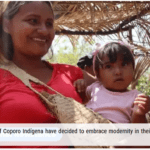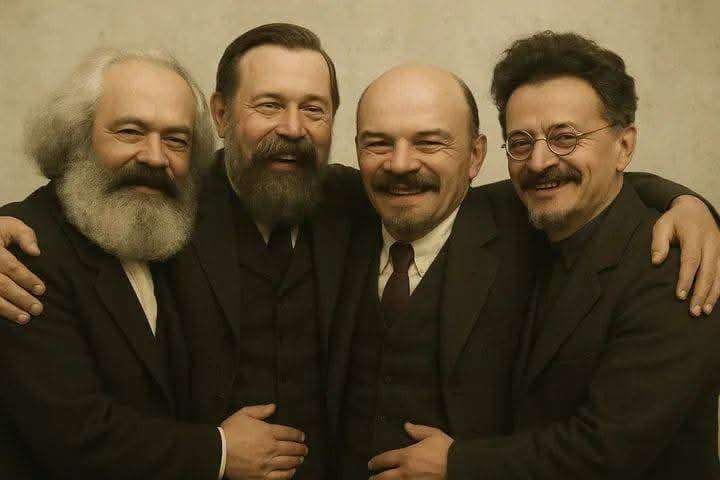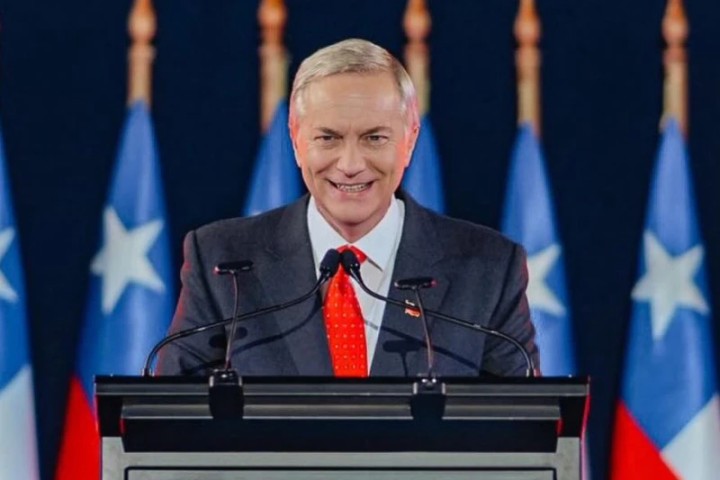By Chris Gilbert, Cira Pascual Marquina (Posted Jul 10, 2024)
Originally published: Venezuelanalysis.com on July 5, 2024 (more by Venezuelanalysis.com) |
Originally published: Venezuelanalysis.com on July 5, 2024 (more by Venezuelanalysis.com) |
For many indigenous peoples of Venezuela, the socialist commune is not new at all but resonates with existing and previous social practices that include communal land tenure and self-governance. That is the case for the Pumé community called “Coporo Indígena,” located in upper Apure just outside Biruaca. Due to its small population, this community is registered as a communal council rather than as a commune.
The history of this Pumé settlement, which takes its name from the coporo river fish, parallels that of many Indigenous communities who have been systematically displaced from their land and made victims of structural violence. Although the Bolivarian Revolution brought important reforms and programs that favored the Pumé and other Indigenous peoples of Venezuela, many injustices still persist, awaiting resolution.
The men and women living in the Coporo Indígena community formerly lived in San José de Capanaparo, near the Colombian border. However, in 1980, the family of cacique Mario García settled in the territory of what is now known as Coporo Indígena. Little by little they built houses, wells, and cleared 30 acres of land for growing corn, beans, topocho [small plantain], and planted a diverse medicinal garden.
Last year, the community comprised 32 families. However, in January 2024, a new group of displaced families arrived on foot from San José de Capanaparo, having fled that region due to violence from irregular groups crossing the border. Today, Coporo Indígena is home to some 50 families who maintain their language and many of their traditions. In the following testimonies, three spokespeople discuss the community’s organization and economy, along with the impact of the U.S. blockade on their daily lives.
SHORT HISTORY OF A PUMÉ COMMUNITY
Mario García: Criollos [non-indigenous people] often ask us where we come from and we always tell them that we are from here, from this land that you and I call Apure. We were here before the invaders came; this was our home before they took our land and our wealth by violent means; we lived here before they tried to strip us of our culture and our cosmovision.
The colonial system attempted to snatch life away from the Pumé people. Still, we have preserved and nurtured the cornerstones of our culture: our belief system, which is integrated with the earth; our organizational structure, which is centered on the community; our crafts, which were passed on to us by the elders; and our language, which is key to the integrity of our people.
I was born in a Pumé community in San José de Capanaparo. In fact, everyone living in Coporo Indígena hails from Capanaparo. Some of us, myself included, came here in 1980, while others arrived just a few months ago. They are the victims of irregular groups of Colombian origin that penetrated the community and forced 17 families to quietly flee their homes on the night of December 24, 2023.
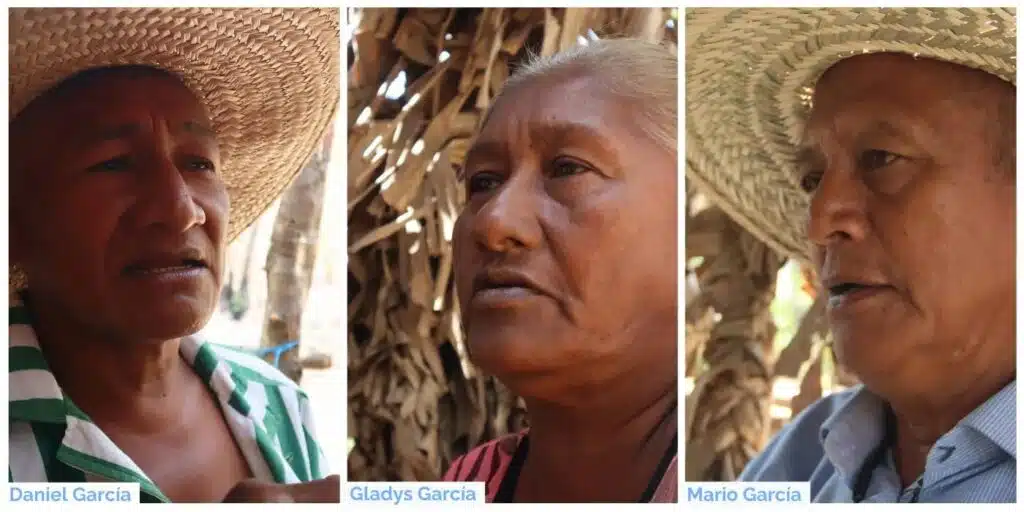 Daniel García was recently displaced from San José de Capanaparo and is now living in Coporo Indígena | Gladys García is a spokesperson for the Coporo Indígena Communal Council | Mario García is the cacique (political leader) of the Coporo Indígena Pumé community. (Photo: Rome Arrieche)
Daniel García was recently displaced from San José de Capanaparo and is now living in Coporo Indígena | Gladys García is a spokesperson for the Coporo Indígena Communal Council | Mario García is the cacique (political leader) of the Coporo Indígena Pumé community. (Photo: Rome Arrieche)
COMMUNAL ORGANIZATION
Mario García: Maintaining a close-knit community in which the land is not individually held but instead sustains everyone who works is integral to the Pumé way of life. Thus, the commune is nothing new for us. In Coporo Indígena, we are organized as a communal council because we are a small Indigenous island in a territory settled by criollos, but we live communally.
Why do I say this? The 30 hectares of land we inhabit are cared for collectively: anyone who works the land will benefit from it, and nobody in our community will go to bed hungry if the land yields its bounty.
Years ago, when this tract of land was assigned to us, the National Land Institute [INTI] wanted to divide it among the families that lived here then. We didn’t like the idea of dividing the land, so we had to confront the authorities. Fortunately, we succeeded, so the only fence that you will see now is the wire around the perimeter of the Coporo Indígena tract of land. We know that fences not only divide the land, but they also divide the community.
In a Pumé community, problems are discussed in meetings and we develop a plan to solve them together. This is what Chávez talked about, but it’s nothing new for us. Of course, this doesn’t mean that we don’t need outside help. In fact, we often do. For example, as a community, we have determined that our priority right now is access to water because our communal council grew overnight when our brothers and sisters from San José de Capanaparo arrived here in January. We need water pumps, which will allow us to increase our production, and we have requested government support to make that happen.
Our ancestors lived in tightly-knit communities or communes, and this kind of organization continues to define our way of life. You may ask, why stick to the old ways? Because we are here to preserve our culture, our language, and our way of life… and there is only one way for this to happen: sharing what we have while living in harmony with nature. This is something that criollo culture has yet to learn.
But we are not only a people of the past. We live in modernity, and that’s why we demand attention from the government: we too need homes, electricity, water, and roads as well as healthcare and education. We don’t shy away from modernity, but we don’t embrace it blindfolded.
Gladys García: In criollo society, what is yours is yours, and what is mine is mine and there’s no two ways about it. In the criollo world, you may not know your neighbor and you aren’t likely to think much about the land where you stand, about nature, about the earth. In Pumé society, we all work together and share the little that we have: shelter, water, and other goods, while the care of the community and the land is everybody’s task.
That’s why, when our brothers and sisters from San José de Capanaparo arrived here in January, we opened our doors to them. What do we expect from them? That they work like us and live like us.
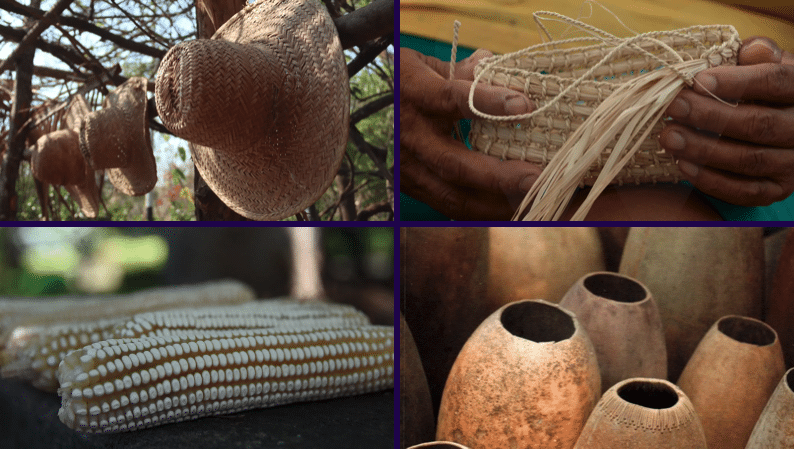
ECONOMY
Mario García: The economic base of Coporo Indígena is farming, while back at home [San José de Capanaparo], the economic base is hunting, fishing, but also subsistence farming as well as craftwork. However, subsistence farming practices have been historically threatened by those who want to commodify the land.
Our agricultural production at Coporo Indígena is hybrid, joining ancestral practices with modern ones. We don’t shy away from mechanization but we also deploy the knowledge passed on by our parents and grandparents. While we are set on preserving our culture, we are not a relic of the past: we aim to technify our production and improve and modernize our living conditions.
We need farm equipment, better roads, and pumps to get water out of the wells. The latter is actually an urgent matter, particularly since a group of displaced families arrived in our community earlier this year. As it is right now, we have enough water to cook and drink, but we don’t have enough water to maintain our production. As an organized community, we are working so that the Consejo Federal de Gobierno [Venezuelan state institution that funds communal projects] finances the digging of new wells and the purchase of pumps.
We have 30 hectares of collective land in Coporo Indígena. Of those, ten are designated for corn production. At the moment, our corn yield is about 1,500 kilos per hectare, but we can bump that up to 4,500 by improving the wells. We could also grow ten hectares of beans with an estimated yield of 1,500 kilos per hectare, amounting to 15,000 kilos per crop. However, this will only be possible if we can solve the water supply issues that we face.
Gladys García: We make many of our own utensils from “tapara” [calabash], from plates to spoons to colanders. We weave our hats and slings to carry the babies out of macanilla [a type of palm] shoots. We make toys such as the trompo [top] and the bobotó [a ball]. We learned the craft from our mothers and grandmothers, and cherish it dearly.
Much of the artisanal production that we sell is made with the “cogollo de macanilla,” which is a bush similar to the coconut palm that grows in San José de Capanaparo. We weave these goods for ourselves, but we also sell some of them so that we can buy rice and sugar.
Unfortunately, we haven’t been able to get “cogollo de macanilla” lately, but we hope to be able to get it soon: when we have stock, we can make three hats in one day, and if we sell them at 5 USD per piece, that’s 15 dollars coming into our household!
Daniel García: In San José de Capanaparo we grew yuca and made our own casabe, we also grew topocho, ñame, and ocumo [root vegetables]. The land there is communal; which means that nobody from the community is kept from working the land.
The land in Capanaparo is less generous than this one, so we worked it for one year at a time and then let it rest. However, in Capanaparo we could hunt and fish all year round. We hunted with bows and arrows and we caught the babas [small caiman] with a harpoon. At night you could hunt them on the side of the river when they are sleepy.
IMPACT OF THE BLOCKADE
Mario García: Here, in Coporo Indígena, we didn’t go hungry even during the worst of the blockade: we make auyama [pumpkin] pancakes and yuca arepas; we also have a conuco [small, diversified plot of land] where we grow corn, beans, and topocho; and we have free-range chickens that lay the best eggs; so our stomachs didn’t go growling. Sometimes we were short on coffee or sugar, but we were able to sustain our community on our own. The blockade helped us re-learn one lesson: we have the tools to break with the outside world if need be.
Our way of doing things is like the bee: we ensure our colony’s wellbeing today and we save part of our production for the winter [rainy season]. Then, whatever is left gets sold or exchanged for whatever we may need.
Daniel García: In San José de Capanaparo we never went hungry: we grew some of our own food, we hunted chigüires [large rodents] and caimans, and the river was there to gift us as much fish as we could eat. What did we need from the outside? Sugar, salt, and little else.
However, we have seen many problems emerge with the blockade and the crisis: in recent years, irregular armed groups have grown in Capanaparo. The phenomenon is an extension of the war in Colombia: I think the economic pressures endured by Venezuela offered good conditions for the expansion of these groups.
This situation is what drove 17 families to leave our homes in San José de Capanaparo on Christmas Eve [2023]. The pressure to join the irregular groups was such that we had to quietly leave town on foot in the middle of the night: we left our houses, our pigs and chickens, everything we had, and walked away! A month later we arrived here, where we were received with open arms.
Gladys García: We have seen the deterioration of our community’s health over the past few years. Now it’s hard for us to get medicines, and it is also hard to get to the hospital. When you go to the doctor, all they can do is give you a piece of paper with the medication you need written on it… but how is one to pay for it?
Before the blockade, things were very different: we were able to get medicines, there were efforts to map the health situation of our community, and pregnant women got vitamin supplements and monitoring.
However, we are not as dependent as other communities. We have our shaman, who visits us regularly while Señora Prudencia, our midwife, brings our children to this world in the Pumé way.
Mario García: The impact of the crisis is indeed noticeable in our community. However, we have something that criollo culture doesn’t have: shamans. Shamans are our maximum authority; they teach us how to live in harmony with the earth and can cure many maladies with leaves and flowers, or with chants and ceremonies.
That doesn’t mean that we are against what some call “scientific medicine.” Some ailments can be cured by our shaman, while others require conventional treatment.
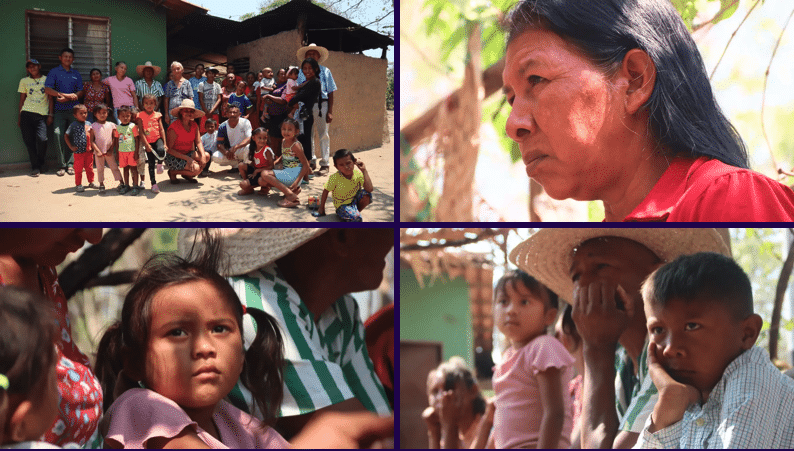
THE BOLIVARIAN REVOLUTION AND THE INDIGENOUS STRUGGLE
Mario García: Before Chávez came to power, state violence against us [Indigenous people] was part of everyday life: the displacement of Indigenous communities with the participation of police and military forces, who were at the service of the terratenientes [large-scale landowners], was not uncommon in Apure.
The Marcos Pérez Jimenez dictatorship [1953-58] was particularly bloody. Back then, in Las Piñas [Guachara municipality, Apure], more than a thousand people were killed. The massacres didn’t end there, however, although they de-intensified. In 1996 or 1997, a large Indigenous family was massacred by the state’s repressive forces. The police and the armed forces have never been our friends.
The revolutionary process saw an important reduction in violence against us [Indigenous peoples]. Additionally, we saw advances in political representation at the national level. Finally, the Bolivarian Process was important in the preservation of our ethnolinguistic practices: in school, many Indigenous kids around the country are learning how to read and write in their mother tongue, and many communities have direct control over the schools in their territory, although this happens with Ministry of Education oversight.
That is the case with the bilingual school in our territory: the Paula Ruiz School has been under our purview since 2015, when we requested that it be transferred from the Ministry of Education to the community.
With the Bolivarian Process, access to higher education also widened for Indigenous people like myself. When I was a kid growing up in San José de Capanaparo, we could only study through 6th grade. If we wanted to go on studying, the only option was a Catholic school. My family, like most Indigenous families, couldn’t pay the fees that the priests demanded, so Indigenous kids saw their education truncated.
When Chávez came into power, I was able to graduate from high school via Misión Ribas. From there I went to Misión Cultura, where I got a degree in education. This would not have been possible without the Bolivarian Process.
We have seen many advances over the past 25 years, but the historical debt of criollo society with us hasn’t been settled: many serious socio-economic problems, from housing to healthcare, persist, while structural violence is still present.
There is a long road to go: we have many challenges, from historical injustices to the U.S. blockade. We need to be heard, but we stand with President Nicolás Maduro and with the Bolivarian Revolution.
Monthly Review does not necessarily adhere to all of the views conveyed in articles republished at MR Online. Our goal is to share a variety of left perspectives that we think our readers will find interesting or useful. —Eds.
The history of this Pumé settlement, which takes its name from the coporo river fish, parallels that of many Indigenous communities who have been systematically displaced from their land and made victims of structural violence. Although the Bolivarian Revolution brought important reforms and programs that favored the Pumé and other Indigenous peoples of Venezuela, many injustices still persist, awaiting resolution.
The men and women living in the Coporo Indígena community formerly lived in San José de Capanaparo, near the Colombian border. However, in 1980, the family of cacique Mario García settled in the territory of what is now known as Coporo Indígena. Little by little they built houses, wells, and cleared 30 acres of land for growing corn, beans, topocho [small plantain], and planted a diverse medicinal garden.
Last year, the community comprised 32 families. However, in January 2024, a new group of displaced families arrived on foot from San José de Capanaparo, having fled that region due to violence from irregular groups crossing the border. Today, Coporo Indígena is home to some 50 families who maintain their language and many of their traditions. In the following testimonies, three spokespeople discuss the community’s organization and economy, along with the impact of the U.S. blockade on their daily lives.
SHORT HISTORY OF A PUMÉ COMMUNITY
Mario García: Criollos [non-indigenous people] often ask us where we come from and we always tell them that we are from here, from this land that you and I call Apure. We were here before the invaders came; this was our home before they took our land and our wealth by violent means; we lived here before they tried to strip us of our culture and our cosmovision.
The colonial system attempted to snatch life away from the Pumé people. Still, we have preserved and nurtured the cornerstones of our culture: our belief system, which is integrated with the earth; our organizational structure, which is centered on the community; our crafts, which were passed on to us by the elders; and our language, which is key to the integrity of our people.
I was born in a Pumé community in San José de Capanaparo. In fact, everyone living in Coporo Indígena hails from Capanaparo. Some of us, myself included, came here in 1980, while others arrived just a few months ago. They are the victims of irregular groups of Colombian origin that penetrated the community and forced 17 families to quietly flee their homes on the night of December 24, 2023.
 Daniel García was recently displaced from San José de Capanaparo and is now living in Coporo Indígena | Gladys García is a spokesperson for the Coporo Indígena Communal Council | Mario García is the cacique (political leader) of the Coporo Indígena Pumé community. (Photo: Rome Arrieche)
Daniel García was recently displaced from San José de Capanaparo and is now living in Coporo Indígena | Gladys García is a spokesperson for the Coporo Indígena Communal Council | Mario García is the cacique (political leader) of the Coporo Indígena Pumé community. (Photo: Rome Arrieche)COMMUNAL ORGANIZATION
Mario García: Maintaining a close-knit community in which the land is not individually held but instead sustains everyone who works is integral to the Pumé way of life. Thus, the commune is nothing new for us. In Coporo Indígena, we are organized as a communal council because we are a small Indigenous island in a territory settled by criollos, but we live communally.
Why do I say this? The 30 hectares of land we inhabit are cared for collectively: anyone who works the land will benefit from it, and nobody in our community will go to bed hungry if the land yields its bounty.
Years ago, when this tract of land was assigned to us, the National Land Institute [INTI] wanted to divide it among the families that lived here then. We didn’t like the idea of dividing the land, so we had to confront the authorities. Fortunately, we succeeded, so the only fence that you will see now is the wire around the perimeter of the Coporo Indígena tract of land. We know that fences not only divide the land, but they also divide the community.
In a Pumé community, problems are discussed in meetings and we develop a plan to solve them together. This is what Chávez talked about, but it’s nothing new for us. Of course, this doesn’t mean that we don’t need outside help. In fact, we often do. For example, as a community, we have determined that our priority right now is access to water because our communal council grew overnight when our brothers and sisters from San José de Capanaparo arrived here in January. We need water pumps, which will allow us to increase our production, and we have requested government support to make that happen.
Our ancestors lived in tightly-knit communities or communes, and this kind of organization continues to define our way of life. You may ask, why stick to the old ways? Because we are here to preserve our culture, our language, and our way of life… and there is only one way for this to happen: sharing what we have while living in harmony with nature. This is something that criollo culture has yet to learn.
But we are not only a people of the past. We live in modernity, and that’s why we demand attention from the government: we too need homes, electricity, water, and roads as well as healthcare and education. We don’t shy away from modernity, but we don’t embrace it blindfolded.
Gladys García: In criollo society, what is yours is yours, and what is mine is mine and there’s no two ways about it. In the criollo world, you may not know your neighbor and you aren’t likely to think much about the land where you stand, about nature, about the earth. In Pumé society, we all work together and share the little that we have: shelter, water, and other goods, while the care of the community and the land is everybody’s task.
That’s why, when our brothers and sisters from San José de Capanaparo arrived here in January, we opened our doors to them. What do we expect from them? That they work like us and live like us.

ECONOMY
Mario García: The economic base of Coporo Indígena is farming, while back at home [San José de Capanaparo], the economic base is hunting, fishing, but also subsistence farming as well as craftwork. However, subsistence farming practices have been historically threatened by those who want to commodify the land.
Our agricultural production at Coporo Indígena is hybrid, joining ancestral practices with modern ones. We don’t shy away from mechanization but we also deploy the knowledge passed on by our parents and grandparents. While we are set on preserving our culture, we are not a relic of the past: we aim to technify our production and improve and modernize our living conditions.
We need farm equipment, better roads, and pumps to get water out of the wells. The latter is actually an urgent matter, particularly since a group of displaced families arrived in our community earlier this year. As it is right now, we have enough water to cook and drink, but we don’t have enough water to maintain our production. As an organized community, we are working so that the Consejo Federal de Gobierno [Venezuelan state institution that funds communal projects] finances the digging of new wells and the purchase of pumps.
We have 30 hectares of collective land in Coporo Indígena. Of those, ten are designated for corn production. At the moment, our corn yield is about 1,500 kilos per hectare, but we can bump that up to 4,500 by improving the wells. We could also grow ten hectares of beans with an estimated yield of 1,500 kilos per hectare, amounting to 15,000 kilos per crop. However, this will only be possible if we can solve the water supply issues that we face.
Gladys García: We make many of our own utensils from “tapara” [calabash], from plates to spoons to colanders. We weave our hats and slings to carry the babies out of macanilla [a type of palm] shoots. We make toys such as the trompo [top] and the bobotó [a ball]. We learned the craft from our mothers and grandmothers, and cherish it dearly.
Much of the artisanal production that we sell is made with the “cogollo de macanilla,” which is a bush similar to the coconut palm that grows in San José de Capanaparo. We weave these goods for ourselves, but we also sell some of them so that we can buy rice and sugar.
Unfortunately, we haven’t been able to get “cogollo de macanilla” lately, but we hope to be able to get it soon: when we have stock, we can make three hats in one day, and if we sell them at 5 USD per piece, that’s 15 dollars coming into our household!
Daniel García: In San José de Capanaparo we grew yuca and made our own casabe, we also grew topocho, ñame, and ocumo [root vegetables]. The land there is communal; which means that nobody from the community is kept from working the land.
The land in Capanaparo is less generous than this one, so we worked it for one year at a time and then let it rest. However, in Capanaparo we could hunt and fish all year round. We hunted with bows and arrows and we caught the babas [small caiman] with a harpoon. At night you could hunt them on the side of the river when they are sleepy.
IMPACT OF THE BLOCKADE
Mario García: Here, in Coporo Indígena, we didn’t go hungry even during the worst of the blockade: we make auyama [pumpkin] pancakes and yuca arepas; we also have a conuco [small, diversified plot of land] where we grow corn, beans, and topocho; and we have free-range chickens that lay the best eggs; so our stomachs didn’t go growling. Sometimes we were short on coffee or sugar, but we were able to sustain our community on our own. The blockade helped us re-learn one lesson: we have the tools to break with the outside world if need be.
Our way of doing things is like the bee: we ensure our colony’s wellbeing today and we save part of our production for the winter [rainy season]. Then, whatever is left gets sold or exchanged for whatever we may need.
Daniel García: In San José de Capanaparo we never went hungry: we grew some of our own food, we hunted chigüires [large rodents] and caimans, and the river was there to gift us as much fish as we could eat. What did we need from the outside? Sugar, salt, and little else.
However, we have seen many problems emerge with the blockade and the crisis: in recent years, irregular armed groups have grown in Capanaparo. The phenomenon is an extension of the war in Colombia: I think the economic pressures endured by Venezuela offered good conditions for the expansion of these groups.
This situation is what drove 17 families to leave our homes in San José de Capanaparo on Christmas Eve [2023]. The pressure to join the irregular groups was such that we had to quietly leave town on foot in the middle of the night: we left our houses, our pigs and chickens, everything we had, and walked away! A month later we arrived here, where we were received with open arms.
Gladys García: We have seen the deterioration of our community’s health over the past few years. Now it’s hard for us to get medicines, and it is also hard to get to the hospital. When you go to the doctor, all they can do is give you a piece of paper with the medication you need written on it… but how is one to pay for it?
Before the blockade, things were very different: we were able to get medicines, there were efforts to map the health situation of our community, and pregnant women got vitamin supplements and monitoring.
However, we are not as dependent as other communities. We have our shaman, who visits us regularly while Señora Prudencia, our midwife, brings our children to this world in the Pumé way.
Mario García: The impact of the crisis is indeed noticeable in our community. However, we have something that criollo culture doesn’t have: shamans. Shamans are our maximum authority; they teach us how to live in harmony with the earth and can cure many maladies with leaves and flowers, or with chants and ceremonies.
That doesn’t mean that we are against what some call “scientific medicine.” Some ailments can be cured by our shaman, while others require conventional treatment.

THE BOLIVARIAN REVOLUTION AND THE INDIGENOUS STRUGGLE
Mario García: Before Chávez came to power, state violence against us [Indigenous people] was part of everyday life: the displacement of Indigenous communities with the participation of police and military forces, who were at the service of the terratenientes [large-scale landowners], was not uncommon in Apure.
The Marcos Pérez Jimenez dictatorship [1953-58] was particularly bloody. Back then, in Las Piñas [Guachara municipality, Apure], more than a thousand people were killed. The massacres didn’t end there, however, although they de-intensified. In 1996 or 1997, a large Indigenous family was massacred by the state’s repressive forces. The police and the armed forces have never been our friends.
The revolutionary process saw an important reduction in violence against us [Indigenous peoples]. Additionally, we saw advances in political representation at the national level. Finally, the Bolivarian Process was important in the preservation of our ethnolinguistic practices: in school, many Indigenous kids around the country are learning how to read and write in their mother tongue, and many communities have direct control over the schools in their territory, although this happens with Ministry of Education oversight.
That is the case with the bilingual school in our territory: the Paula Ruiz School has been under our purview since 2015, when we requested that it be transferred from the Ministry of Education to the community.
With the Bolivarian Process, access to higher education also widened for Indigenous people like myself. When I was a kid growing up in San José de Capanaparo, we could only study through 6th grade. If we wanted to go on studying, the only option was a Catholic school. My family, like most Indigenous families, couldn’t pay the fees that the priests demanded, so Indigenous kids saw their education truncated.
When Chávez came into power, I was able to graduate from high school via Misión Ribas. From there I went to Misión Cultura, where I got a degree in education. This would not have been possible without the Bolivarian Process.
We have seen many advances over the past 25 years, but the historical debt of criollo society with us hasn’t been settled: many serious socio-economic problems, from housing to healthcare, persist, while structural violence is still present.
There is a long road to go: we have many challenges, from historical injustices to the U.S. blockade. We need to be heard, but we stand with President Nicolás Maduro and with the Bolivarian Revolution.
Monthly Review does not necessarily adhere to all of the views conveyed in articles republished at MR Online. Our goal is to share a variety of left perspectives that we think our readers will find interesting or useful. —Eds.
About Cira Pascual Marquina Cira Pascual Marquina is Political Science Professor at the Universidad de Bolivariana de Venezuela in Caracas and is staff writer for Venezuelanalysis.com.
![]()

